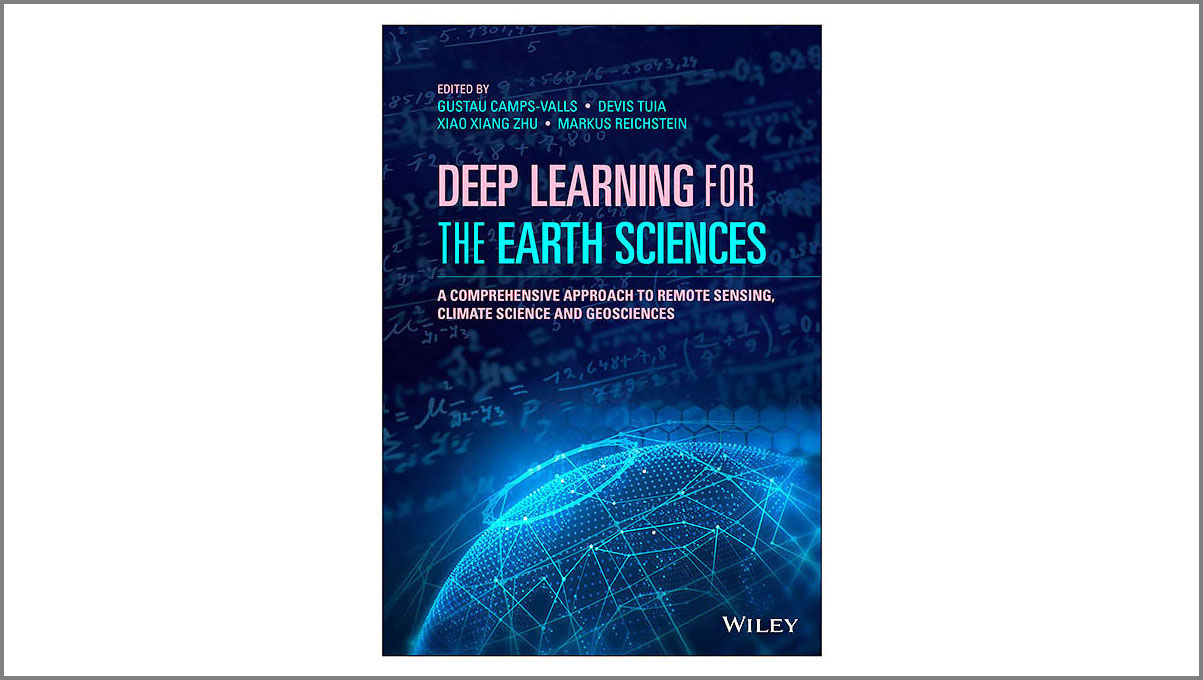A new book entitled Deep Learning for the Earth Sciences provides the most complete information on the application of this Artificial Intelligence tool to Earth and Climate Sciences. Published by the American publishing house John Wiley & Sons Ltd, the book compiles contributions from 80 international experts and has Gustau Camps-Valls as its principal editor at the University of Valencia.
“Deep learning is a machine learning machine where artificial neural networks learn from large amounts of data”, as defined by Gustau Camps-Valls, professor of Electronic Engineering at the University of Valencia, researcher at the Image Processing Laboratory (IPL) of the same institution and the main editor of Deep Learning for the Earth Sciences: A Comprehensive Approach to Remote Sensing , Climate Science and Geosciences.
Published by John Wiley & Sons Ltd –American publisher of scientific and technical publications–, the book addresses and structures the last ten years of application of deep learning methods to Earth sciences. It is a still emerging field that, due to its great capacity to improve the understanding of climatic phenomena, model the climate or detect floods, droughts or other extreme phenomena, for example, is becoming increasingly relevant in university curricula; a relevant field also for the resolution of problems by meteorological centres and international organisations in the current climate crisis context.
With 500 pages, 22 chapters and more than 80 authors –international experts in different aspects of the subject–, Deep Learning for the Earth Sciences focuses on three main areas: remote sensing, geoscience and climate. “The book contains developments and applications of deep learning for the study of the biosphere, atmosphere, oceans and cryosphere; specifically for the detection of anomalies and climate change, for data fusion, the search and retrieval of images in large databases, the analysis of essential climatic variables, the discovery of patterns or weather forecasting, among many more”, comments Gustau Camps-Valls. “All the authors of the book have applied this technology to their field of research proving that it outperforms traditional methods in efficiency and accuracy, providing Earth and Climate scientists with a better understanding of the environment and a greater ability to explain the processes that are observed through satellite images and climate models”, Camps adds.
Deep Learning for the Earth Sciences is prefaced by Vipin Kumar, a professor at the University of Minnesota, and co-edited by Devis Tuia, of the École Polytechnique Fédérale de Lausanne (EPFL, Switzerland), Xiaoxiang Zhu (German Aerospace Center and Technical University of Munich, Germany), Markus Reichstein (Max Planck Institute, Germany) and Gustau Camps-Valls himself, from the University of Valencia.
Aimed at doctoral students, researchers and informed readers in general, the book is available at the publishing house, both online and in print, and is associated with a free web-repository where code and data are distributed.
https://onlinelibrary.wiley.com/doi/book/10.1002/9781119646181


